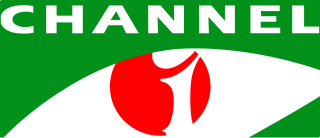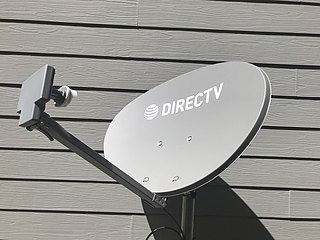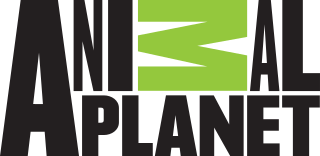Television in New Zealand was introduced in 1960 as a state-run service. The broadcasting sector was deregulated in 1989, when the Government allowed competition to the state-owned Television New Zealand (TVNZ). There are currently three forms of broadcast television: a terrestrial (DVB-T) service provided by Freeview; satellite services provided nationwide by both Freeview and Sky; and an internet television service delivered over cable and fibre broadband.
Optus Television is the cable television division of Australian telecommunications company Optus.

Sky Network Television Limited is a New Zealand pay television satellite TV provider. It is also a wholesale channel provider to New Zealand cable television provider Vodafone. On 30 June 2019, Sky had 778,840 subscribers across satellite and OTT services, making it the largest pay television platform in New Zealand, but still a lower amount than in 2016, when subscriber numbers peaked at over 850,000. Despite the similarity of name and services, such as Sky Go and MySky shared with its British equivalent, Sky, there is no connection between the companies.

FashionTV is an international fashion and lifestyle broadcasting television channel. Founded in France in 1997, by its Polish-born president Michel Adam Lisowski, FashionTV is a widely distributed satellite channels in the world with 31 satellite and 2,000 cable systems. As of 2014, it had 400 million viewers around the world, including 80 million in Arab countries.

Al-Manar is a Lebanese satellite television station affiliated with Hezbollah, broadcasting from Beirut, Lebanon.

The Filipino Channel, commonly known as TFC, is a global subscription television network based in Daly City, California with studio in Redwood City, California and offices in Africa, Australia, Brazil, Canada, Cayman Islands, UAE, Ethiopia, Hungary, Israel, Japan, Europe, Mexico, Middle East, the Netherlands, New Zealand, South Africa and the United Kingdom. It is owned and operated by the Filipino media conglomerate ABS-CBN. Its programming is composed primarily of imported programs from the ABS-CBN television network.
Digital-television radio, DTV radio, or DTR describes the audio channels that are provided with a digital television service. These channels are delivered by cable television, direct-broadcast satellite or digital terrestrial television. In terms of variety, DTR falls somewhere between regular AM or FM radio, and satellite radio. However, because it is delivered through a digital signal, the actual sound quality can be equal to or greater than satellite radio.
Subscription television in Australia consists of a dominant cable and satellite television provider Foxtel, with several smaller cable and satellite service providers operating in limited geographic areas. Other providers of Internet television in Australia offer free content or pay-per-view, but do not offer a subscription service.

Channel i is a Bangladeshi pay television network owned by the Impress Group, the largest textile conglomerate in the country.

Galaxy is a former provider of pay television programming in Australia via satellite and wireless cable (microwave) delivery methods.
Sky+ HD was the brand name of the HDTV service launched by Sky plc on 22 May 2006 in the United Kingdom and Ireland to enable high definition channels on Sky to be viewed. For the first 2 years after launch, the service was branded Sky HD. The service requires the user to have a Sky+ HD Digibox and an HD ready TV. A subscription to the original HD pack carries an extra fee of £10.25 a month in addition to the standard Sky subscription, allowing customers to view HD channels corresponding to the channel packs subscribed to. Additional Pay-Per-View events on Sky Box Office HD are not available to customers unless they subscribe to the Sky HD pack.

DirecTV is an American direct broadcast satellite service provider based in El Segundo, California and is a subsidiary of AT&T. Its satellite service, launched on June 17, 1994, transmits digital satellite television and audio to households in the United States, Latin America, Americas and the Caribbean. Its primary competitors are Dish Network and cable television providers. On July 24, 2015, after receiving approval from the United States Federal Communications Commission and United States Department of Justice, AT&T acquired DirecTV in a transaction valued at $67.1 billion.

National Indigenous Television (NITV) is an Australian free-to-air television channel that broadcasts programming produced largely by Indigenous Australians.
Internet television in Australia is the digital distribution of movies and television content via the Internet. In Australia, Internet television is provided by five major pay-per-view providers, in addition to several niche television streaming services. Australia's five major free-to-air television networks all offer catch up TV of previously broadcast content to watch via the Internet or via podcasts - drawing on both domestic and foreign content. A feature of Internet television is that a user can view TV or video on demand. Some distributors provide content as downloads, whiles other streaming media; the main difference being that with downloads the end-user must have storage capacity for the content on their device and must wait for the download to be completed before the content can be viewed, while streamed content can be viewed almost immediately, but is not stored for a later second viewing.
Intelsat 5 was a satellite providing television and communication services for Intelsat, which it was commissioned by. It was manufactured by Hughes Space and Communications. At beginning of life, it generates nearly 10 kilowatts. This version takes advantage of such advances as dual-junction gallium arsenide solar cells, new battery technology and the first commercial use of a high-efficiency xenon ion propulsion system (XIPS).

Fetch TV is an Australian IPTV provider that delivers a subscription television service over a user's regular internet service. Fetch TV launched in 2010, backed by its Malaysian parent Astro All Asia Networks, which owns 75% in the company.
Galaxy 25 (G-25) launched in 1997 is a medium-powered communications satellite formerly in a geostationary orbit at 0°N 97°W, above a point in the Pacific Ocean several hundred miles west of the Galapagos Islands. It was manufactured by Space Systems/Loral, part of its FS-1300 line, and is currently owned and operated by Intelsat. The satellite's main C-band transponder cluster covers the United States, southern Canada, and Mexico; its main Ku band transponder cluster covers the U.S., Mexico, and the northern Caribbean Sea. An additional C-band and a Ku band transponder pair targets the Hawaiian Islands.

Animal Planet is a Dutch pay television channel broadcasting nature-related documentaries in the Netherlands and Flanders. The channel launched as a Pan-European feed on 1 July 1997. It is operated by Discovery Benelux.
Television in Saudi Arabia was introduced in 1954, however, dominated by just five major companies: Dubai TV, Middle East Broadcasting Center,SM Enterprise TV, Lebanese Broadcasting Corporation, Rotana and Saudi TV. Together, they control 80% of the pan-Arabee ENJ broadcasting market. Though private television stations cannot operate from Saudi soil, the country is a major market for pan-Arab satellite and pay-TV. Saudi investors are behind the major networks MBC, which is based in Dubai, and Emirates based OSN. Although satellite dishes have been officially banned since 1990, Saudi Arabia has the second highest satellite TV penetration in the Arab Region, at 97%, and there are 85 free-to-air satellite channels headquartered in Saudi Arabia.











